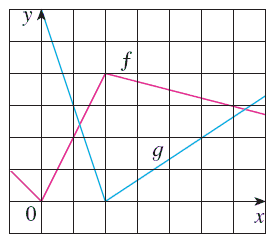If f and g are the functions whose
howardfamilyranch44
Open question
2022-09-29
If f and g are the functions whose graphs are shown, let
u(x) = f(g(x)),
v(x) = g(f(x)), and w(x) = g(g(x)).
Find each derivative, if it exists. If it does not exist, explain why. (If an answer does not exist, enter DNE.)
(a)
u'(1) =
It does exist.u'(1) does not exist because f '(1) does not exist. u'(1) does not exist because g'(1) does not exist.u'(1) does not exist because f '(3) does not exist.u'(1) does not exist because g'(2) does not exist.
(b)
v'(1) =
It does exist.v'(1) does not exist because f '(1) does not exist. v'(1) does not exist because g'(1) does not exist.v'(1) does not exist because f '(3) does not exist.v'(1) does not exist because g'(2) does not exist.
(c)
w'(1) =
It does exist.w'(1) does not exist because f '(1) does not exist. w'(1) does not exist because g'(1) does not exist.w'(1) does not exist because f '(3) does not exist.w'(1) does not exist because g'(2) does not exist.
New Questions in Calculus 1
Find the local maximum and minimum values and saddle points of the function. If you have three-dimensional graphing software, graph the function with a domain and viewpoint that reveal all the important aspects of the function
in derivative?
What is the derivative of ?
What is the limit of as ?
What is the derivative of ?
What is the derivative of ?
How to find as using l'Hospital's Rule?
What is the integral of ?
What is the derivative of ?
What Is the common difference or common ratio of the sequence 2, 5, 8, 11...?
How to find the derivative of ?
How to evaluate the limit as x approaches 0?
How to find derivatives of parametric functions?
What is the antiderivative of ?
How to evaluate: indefinite integral ?